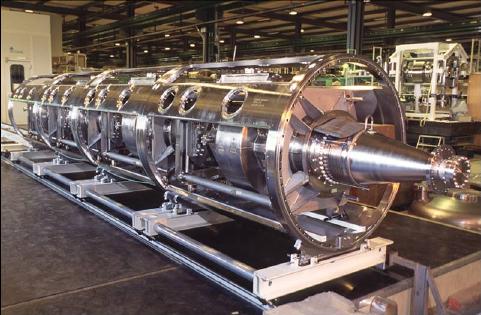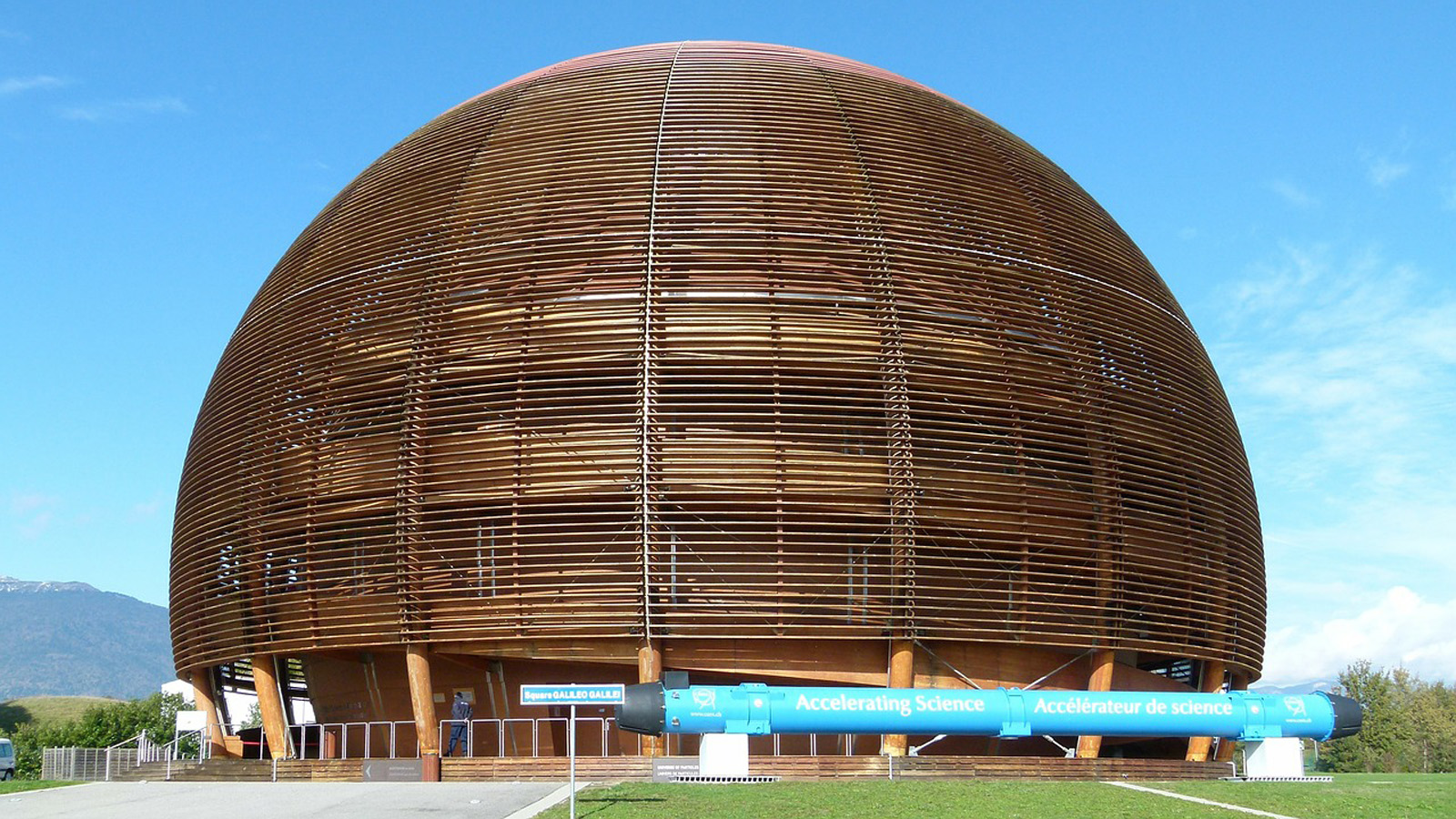Taking a closer look at LHC
RF Cavities
The main role of the RF (Radiofrecuency) cavities is to keep the 2808 proton bunches tightly bunched to ensure high luminosity at the collision points and hence maximize the number of collisions (luminosity). They also deliver radiofrequency (RF) power to the beam during acceleration to the top energy. Superconducting cavities with small energy losses (synchrotron radiation) and large stored energy are the best solution.


For the LHC, cavities are grouped in fours cryomodules, with two cryomodules per beam, and installed in a long straight section of the machine where the interbeam distance will be increased from the normal 195 mm to 420 mm.
Every proton passing thru the RF Cavities is affected for:
2 x 8 MV = 16 MV
So, it receives an extra energy: 16 MeV
Since every proton goes around 11245 laps per second the total energy received per second is:
(16 MeV/lap) x (11245 laps/s)= 1.8·105 MeV/s or 0.18 TeV/s (1)
From SPS every proton enters LHC with 0.45 TeV , so the amount of energy that cavities has to provide is:
7 - 0.45 = 6.55 TeV
From (1) we can calculate the length of time required to accelerate the beam to full energy:
6.55 / 0,18 = 36,4 s
The right result is about 20 minutes. The reason for this difference, at least part, is that protons are not fully affected by the total voltage of the Cavity. So, more time is needed. More important is to keep the bunches compact to increase of the chances of a collision.
We define the Harmonic Number as a ratio of the particle revolution period to the period of the accelerating RF voltage changes
Harmonic Number = Tparticle/TRF or Harmonic Number = Tparticle·fRF
Tparticle=LHClength/c ⇒ Tparticle = 26.659/300000 = 8.9·10-5 s
Harmonic Number = (8.9·10-5)·(400·106)
Harmonic Number ≈ 35600
For a more complete discussion go here...
|
AUTHORS Xabier Cid Vidal, PhD in experimental Particle Physics for Santiago University (USC). Research Fellow in experimental Particle Physics at CERN from January 2013 to Decembre 2015. He was until 2022 linked to the Department of Particle Physics of the USC as a "Juan de La Cierva", "Ramon y Cajal" fellow (Spanish Postdoctoral Senior Grants), and Associate Professor. Since 2023 is Senior Lecturer in that Department.(ORCID). Ramon Cid Manzano, until his retirement in 2020 was secondary school Physics Teacher at IES de SAR (Santiago - Spain), and part-time Lecturer (Profesor Asociado) in Faculty of Education at the University of Santiago (Spain). He has a Degree in Physics and a Degree in Chemistry, and he is PhD for Santiago University (USC) (ORCID). |
CERN CERN Experimental Physics Department CERN and the Environment |
LHC |
IMPORTANT NOTICE
For the bibliography used when writing this Section please go to the References Section
© Xabier Cid Vidal & Ramon Cid - rcid@lhc-closer.es | SANTIAGO (SPAIN) |



